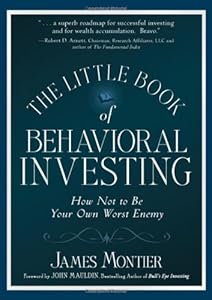Bubbles. Kids love them. Investors hate them. And if the rest of the populace understood their meaning in financial terms, they would hate ’em too. Especially in the current economic climate, largely the result of a bubble that blinded, muted and deafened us from the signs of a tornado in the making.
To be fair, words of dissent and caution did rise during the bubble of India’s accelerating growth, warning investors and leaders of impending danger. But as happens in the case of most bubbles, no one really listens. Instead, the harbinger of bad news becomes the target of jokes, rants, and career aspersions.

A “bubble” in market parlance is defined as a real price movement at least two standard deviations from trend. But more than the definition, it’s the aftermath of the bubble that brings home the real meaning of the deadly phenomenon. We’re onto Chapter 11 of The Little Book of Behavioral Investing: How not to be your worst enemy. And the theme this time, as I’m sure you’ve guessed, is bubbles.
India is currently experiencing the repercussions of a debt-driven bubble gone bust. As Jayanti Ghosh, Professor of Economics and Chairperson at the Centre for Economic Studies and Planning, Jawaharlal Nehru University, New Delhi states: “The Indian economy may well be on the verge of a full-blown currency crisis.”
Inflation is biting the middle class from every side. With the price of basic amenities touching the sky, and the rupee-dollar rate making exporters jittery, we’re exhibiting the classic signs of “revulsion,” the terminal phase of John Stuart Mill‘s framework of a bubble. Let’s break that up:
Phase 1: Displacement: India’s potential is discovered by developing countries like US, UK, etc. Lots of capital flows in. Real estate and construction jump. Traded goods see a slump.
Phase 2: Bubble nurturing: As the boom grows, more investment options arise in non-trading sectors such as real estate and construction. Credit lines opened up for the masses, at low interest rates.
Phase 3: Euphoria: The general consensus is that the graph will continue rising. Investors abandon time-tested valuation methods and adopt new tools to justify the current price and trend. Over-confidence and over-optimism rule decisions as investors stop thinking about the logic and viability of their commitments. Everyone wants a slice of the pie.
Phase 4: Financial distress: Insiders start cashing out. Since June more than $12bn has been withdrawn by portfolio investors alone (ref). This is a phase when fraud and defaults abound and traders are forced to sell goods at basement prices to meet obligations.
Phase 5: Revulsion: Investors stay away from the market, needing time to recover from the shock. This leads to bargain basement asset prices. That’s where we’re at today.
Montier quotes Herb Stein’s (Chairman of the Council of Economic Advisers under Presidents Nixon and Ford) prophetic words to underscore the fatality of bubbles: “If something can’t go on forever, it won’t.” If the market looks too good to be true, it probably is.
Why, if the signs of a bubble are apparent to at least some market watchers, do investors get taken in? Sometimes it’s because professional investors must answer to clients and bosses who disagree with their cautious point of view. It becomes a choice between risking their career or their client’s money – an easy decision for most. And other times, investors are blinded by their own behavioral tendencies, namely:
- Over-optimism: Bad things only happen to other people. We’re good.
- Illusion of control: We can control the outcome of events, however high the probability of our loss if we measure the problem mathematically.
- Self-serving bias: We interpret information to suit our self-interest – keep the client happy (not that that’s going to last), listen to the boss, I need this job, etc.
- Myopia: We focus on the short-term versus long for palliative comfort. Why worry about tomorrow?
- Inattentional blindness: An interesting word that means we simply do not expect to see what we’re not looking for. Meaning that if a bear winged past while we were looking for that plane on the horizon, we probably wouldn’t notice.
Montier suggests investors keep the following points in mind to avoid succumbing to bubbles:
- Educate yourself on market history. The stories are horrifying enough to make you vigilant.
- Don’t assume bubbles are black swans. The signs are always visible, if you’re looking for them.
Bubble busts have broken economies before and the worst for us could still be ahead. Meanwhile, Montier suggests an action plan for investors – Watch the market for signs and do your own research. Don’t ignore circumstances for short-term gains because the long-term impact of a bubble can break you for good.
Monica Samuel is doing a chapter-wise review of the book: The Little Book of Behavioral Investing: How not to be your worst enemy by James Montier. You can follow the series by following this tag: tlbbinvesting or by subscribing to this rss feed: tlbbifeed













